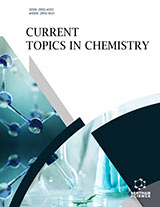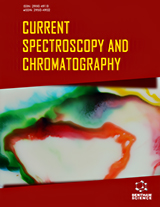Abstract
A new high-performance thin-layer chromatographic (HPTLC) method has been established for determination of mycophenolate mofetil in human plasma. Mycophenolate mofetil is used as an important immunosuppressive agent. Chromatographic separation was performed on aluminium plates coated with silica gel 60F254; the mobile phase was a combination of triethylamine buffer (pH 5.3) and acetonitrile in the ratio of 20:80 (v/v) respectively. Densitometric analysis of mycophenolate mofetil was performed at 250 nm. The method was rapid (single-step extraction with acetonitrile), sensitive (limit of quantification 15.4 ng per zone), precise (CV ≤ 3.71 %), accurate (drug recovery 95.08-100.6%), and linear over the range 100-1200 ng per zone. Recovery of mycophenolate mofetil from plasma samples was 95.8 ± 4.5%. The half-life of mycophenolate mofetil in plasma was 20.4 h at 4°C and 17.8 h at 20°C. Mycophenolate mofetil is stable in human plasma for at least two months at -20°C and can tolerate two freeze-thaw cycles with losses < 10%. The method was successfully used to determine therapeutic levels of mycophenolate mofetil.
Keywords: Mycophenolate mofetil, High-performance thin-layer chromatography, Human plasma, Densitometric analysis, Limit of quantification, Liquid chromatographic mass spectrometry, Specificity, Freeze-Thaw Stability, Precision, Accuracy
Current Analytical Chemistry
Title: Validated, Stability Indicating HPTLC Method for the Determination of Mycophenolate Mofetil in Human Plasma
Volume: 7 Issue: 3
Author(s): Suraj P. Verma, Sadaf J. Gilani, Indu Bala, D. P. Maurya, Ozair Alam, Nadeem Siddique and Suroor A. Khan
Affiliation:
Keywords: Mycophenolate mofetil, High-performance thin-layer chromatography, Human plasma, Densitometric analysis, Limit of quantification, Liquid chromatographic mass spectrometry, Specificity, Freeze-Thaw Stability, Precision, Accuracy
Abstract: A new high-performance thin-layer chromatographic (HPTLC) method has been established for determination of mycophenolate mofetil in human plasma. Mycophenolate mofetil is used as an important immunosuppressive agent. Chromatographic separation was performed on aluminium plates coated with silica gel 60F254; the mobile phase was a combination of triethylamine buffer (pH 5.3) and acetonitrile in the ratio of 20:80 (v/v) respectively. Densitometric analysis of mycophenolate mofetil was performed at 250 nm. The method was rapid (single-step extraction with acetonitrile), sensitive (limit of quantification 15.4 ng per zone), precise (CV ≤ 3.71 %), accurate (drug recovery 95.08-100.6%), and linear over the range 100-1200 ng per zone. Recovery of mycophenolate mofetil from plasma samples was 95.8 ± 4.5%. The half-life of mycophenolate mofetil in plasma was 20.4 h at 4°C and 17.8 h at 20°C. Mycophenolate mofetil is stable in human plasma for at least two months at -20°C and can tolerate two freeze-thaw cycles with losses < 10%. The method was successfully used to determine therapeutic levels of mycophenolate mofetil.
Export Options
About this article
Cite this article as:
P. Verma Suraj, J. Gilani Sadaf, Bala Indu, P. Maurya D., Alam Ozair, Siddique Nadeem and A. Khan Suroor, Validated, Stability Indicating HPTLC Method for the Determination of Mycophenolate Mofetil in Human Plasma, Current Analytical Chemistry 2011; 7 (3) . https://dx.doi.org/10.2174/1573411011107030216
| DOI https://dx.doi.org/10.2174/1573411011107030216 |
Print ISSN 1573-4110 |
| Publisher Name Bentham Science Publisher |
Online ISSN 1875-6727 |
 8
8
- Author Guidelines
- Bentham Author Support Services (BASS)
- Graphical Abstracts
- Fabricating and Stating False Information
- Research Misconduct
- Post Publication Discussions and Corrections
- Publishing Ethics and Rectitude
- Increase Visibility of Your Article
- Archiving Policies
- Peer Review Workflow
- Order Your Article Before Print
- Promote Your Article
- Manuscript Transfer Facility
- Editorial Policies
- Allegations from Whistleblowers
- Announcements
Related Articles
-
Anthocyanins As Modulators of Cell Redox-Dependent Pathways in Non-Communicable Diseases
Current Medicinal Chemistry Prognostic Markers in Small Cell Lung Cancer
Current Cancer Therapy Reviews Mitochondrial and Plastid Functions as Antimalarial Drug Targets
Current Drug Targets - Infectious Disorders Antimicrobial Action of Chelating Agents: Repercussions on the Microorganism Development, Virulence and Pathogenesis
Current Medicinal Chemistry Obstructive Sleep Apnea in Chronic Obstructive Pulmonary Disease: The Overlap Syndrome
Current Respiratory Medicine Reviews Serotonin-Dopamine Interaction as a Focus of Novel Antidepressant Drugs
Current Drug Targets Nutritional Support in Cancer
Current Nutrition & Food Science Host Defense Peptides and the New Line of Defence Against Multiresistant Infections
Protein & Peptide Letters Expression Suppression and Activity Inhibition of TRPM7 Regulate Cytokine Production and Multiple Organ Dysfunction Syndrome During Endotoxemia: a New Target for Sepsis
Current Molecular Medicine Neuron-glia Interaction as a Possible Pathophysiological Mechanism of Bipolar Disorder
Current Neuropharmacology Emerging Treatment Options in Severe Asthma
Current Respiratory Medicine Reviews Updates on the Production of Therapeutic Antibodies Using Human Hybridoma Technique
Current Pharmaceutical Design Ex Vivo Liver – Directed Gene Therapy for the Treatment of Metabolic Diseases: Advances in Hepatocyte Transplantation and Retroviral Vectors
Current Gene Therapy Therapeutic Potential of Endothelial Progenitor Cells in the Field of Orthopaedics
Current Stem Cell Research & Therapy Recent Advances in Antigen-Based Generation of Monoclonal Antibodies
Current Immunology Reviews (Discontinued) Hemopoiesis and Allergy, An Introduction to the Special Issue
Current Drug Targets - Inflammation & Allergy Digital Ulcers in Systemic Sclerosis – Frequency, Subtype Distribution and Clinical Outcome
Current Rheumatology Reviews Synthetic and Natural Products as Iron Chelators
Current Topics in Medicinal Chemistry Design and Fabrication of Magnetically Responsive Nanocarriers for Drug Delivery
Current Medicinal Chemistry Cannabinoid Receptors as Target for Treatment of Osteoporosis: A Tale of Two Therapies
Current Neuropharmacology


























